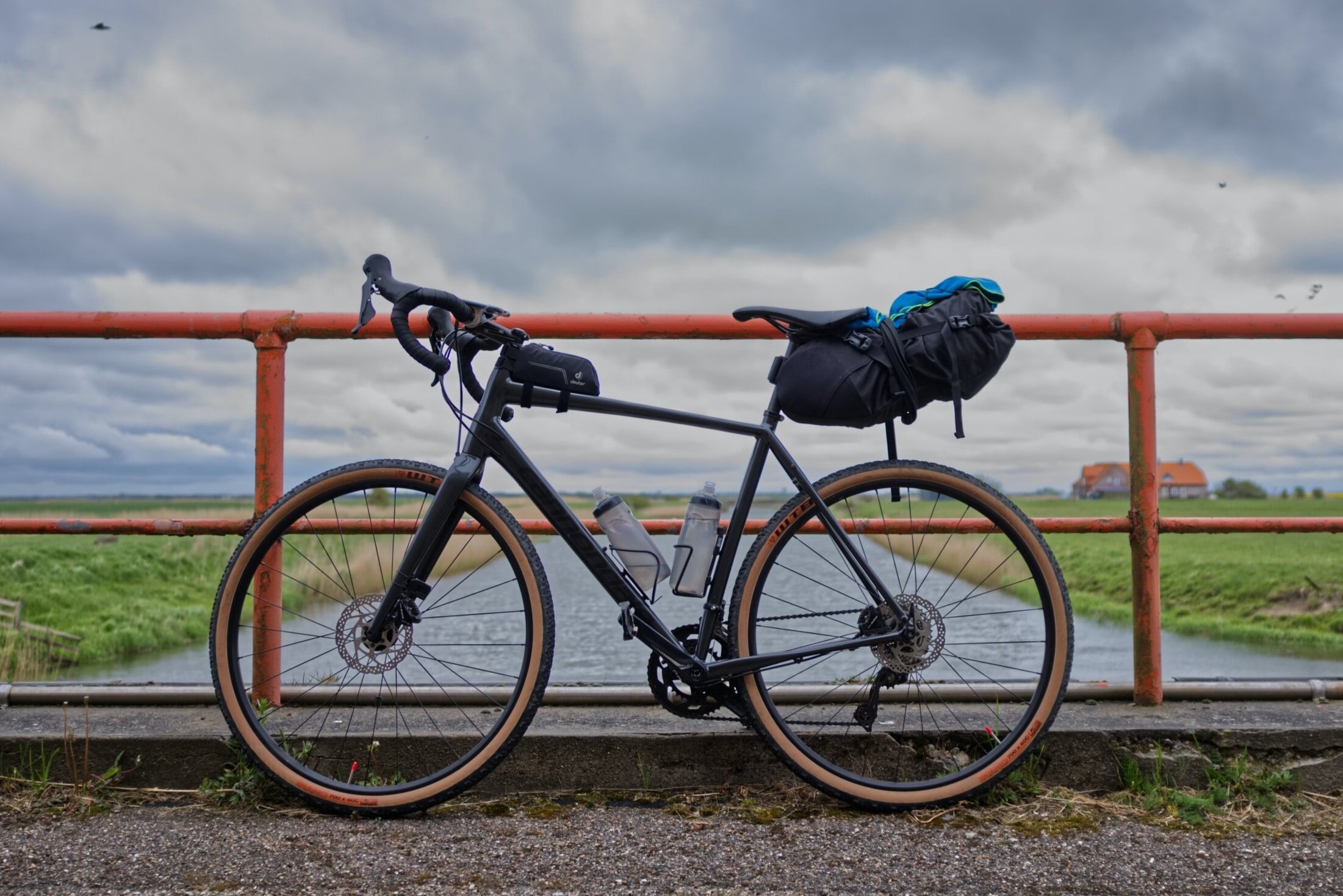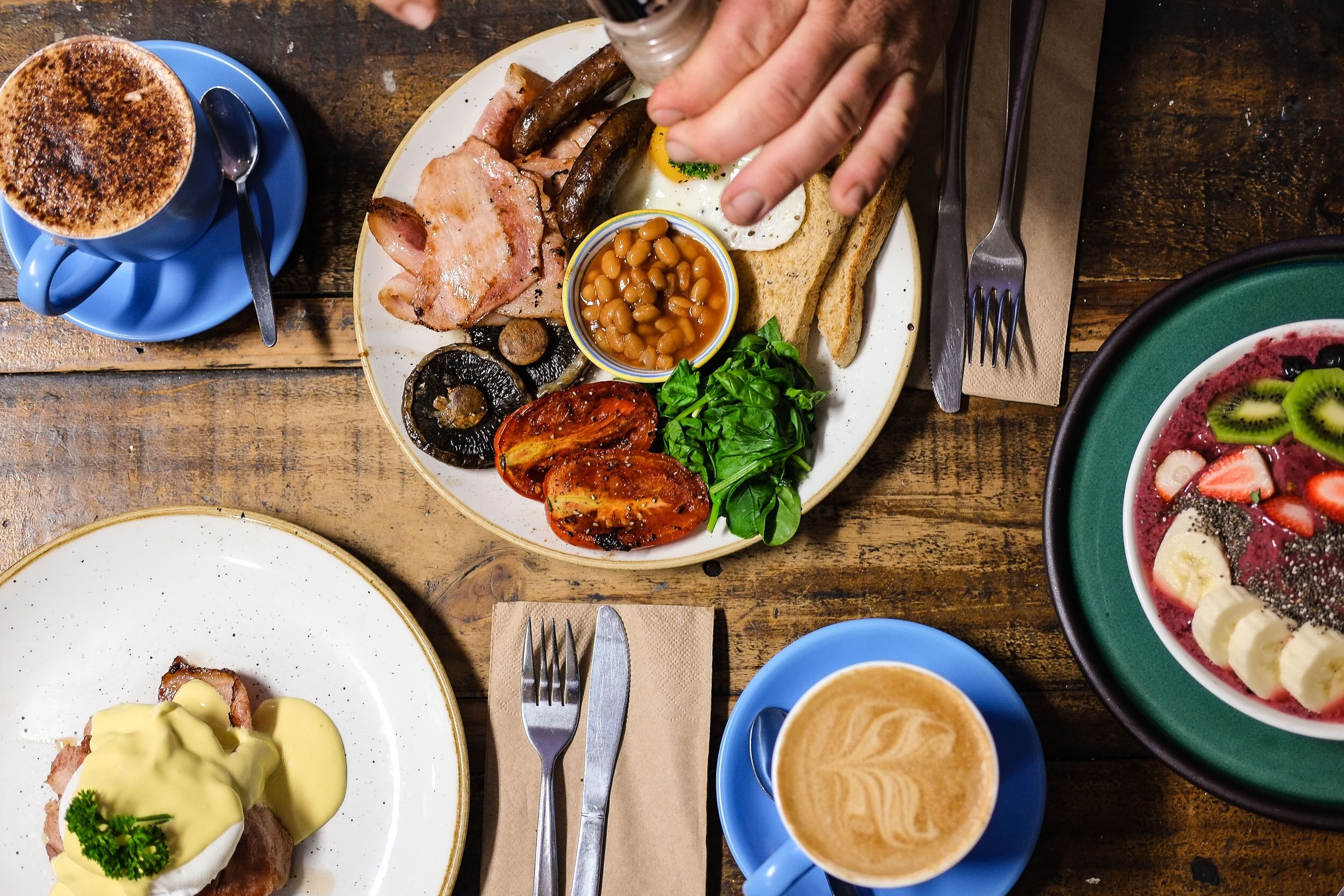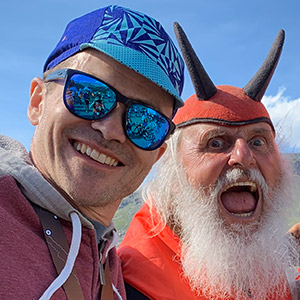Jun 23, 2023
Q&A: Training for multi-day bikepacking

This summer I’ve decided to tackle a bucket list challenge with some friends - we’re going to ride one of the UK’s most iconic routes from Land’s End to John O’Groats (commonly known as LEJOG). We’ll be covering over 1600km with around 15000m of climbing in around 10 days.
I’ve ridden all sorts of different events over the years from short intense XC racing to longer alpine sportives, and plenty in between, but I’ve never had to get back on the bike day after day for an epic bikepacking challenge like LEJOG, which raises some interesting questions around training and preparation.
So I asked the guys I’ll be bikepacking with what questions they had, then sat down with Kudo Coach co-founder, professional coach and 3 times Olympic cyclist Oli Beckingsale to get some advice.
Training and Preparation
Steve: How long should our training sessions be? Should we be trying to ride as long as we will be each day during the event?
Oli: During LEJOG you’re going to be averaging 100-160km a day so it’s important to feel comfortable on your bike for a single long ride of this length before you start. Ideally when building up to an endurance bikepacking event like this you want to be doing a long training ride each week, gradually building up the duration over the weeks. However, we don’t all have the luxury of time, so shorter endurance rides of 2-3hr with blocks of Z3 are an ideal way to increase endurance if you’re limited for time.
Steve: When would you start preparing for a multi day endurance event? Or is earlier the better?
Oli: If you’re cycling regularly and starting from a decent fitness level then four months is a good time to kick start your focussed training, giving you four good training blocks before the event. This is a good length of time to stay focused and if you have family/partners then long enough for them to put up with you cycling a lot!!
Steve: Would you do a dummy run of the event in preparation?
Oli: You’re never going to be able to do the event itself in training, but ideally you would do a practice event of say three days, covering a similar daily distance. Doing this a month or so before the event would be ideal. This is a great interim training goal too, but also fantastic mental preparation itself. You’ll get a good idea of ride pacing, check your equipment, and also experience the feeling of starting back to back riding days with tired legs.

Steve: Some of us are running, cycling and hiking. Does this combination matter? Or should we be concentrating on just riding now?
Oli: All exercise is going to help increase cardiovascular fitness but to be honest you need to be on the bike as much as possible and focusing on specific cycling efficiency and strength endurance.
Steve: Should we be aiming for longer and longer rides with days off in between. Or should we be out every day getting our bodies used to riding every day?
Oli: You’re not professional cyclists, so how you structure your training week will likely be dependent on work and family life. If you only have time for shorter sessions each week, then make the most of Kudo Coach Base Builder workouts as these are the best bang for your buck. Ideally you want a regular weekly long ride where you can up the duration each week and build up to the 160km ride length.
Steve: Should we be adding weight to our bikes for training rides, simulating what we’ll be carrying during the trip?
Oli: Generally I would say no, as the riding will be less enjoyable with a load on, but for your practice bikepacking events or in the month build up to the main trip you’ll want to test your kit so I would load up.
Steve: What are the benefits of a bike fit before a multi-day ride?
Oli: When bikepacking for long distances over multiple days you’ll be pushing your body and kit to its limit. Therefore any weaknesses or poor set up will eventually surface with the potential to put a stop you completing your event. I would advise a bike fit if you have any doubts about your set up, but again make sure you do this well in advance of the event as you will want to give yourself time to adapt to any changes.
During the event
Steve: Is there any particular equipment or clothing that you would recommend for a multi day event?
Oli: The most important thing is to make sure your kit is tried and tested. You want your clothing to be in good condition and you need to be sure that it’s a good fit and will not rub. I would go for the best shorts you can buy and also the best shoes. These contact points are key to comfort.
In terms of kit, the saddle is obviously important but less obvious is the handlebar and bar tape. A lot of riders experience hand pain/discomfort when riding for this long so it may be worth looking at gel inserts for under the tape, thicker bar tape or padded gloves.
Steve: How do we ride? Do we keep our heart rate below a threshold?
Oli: On a long day in the saddle, the most efficient way to ride is to stay at an aerobic pace, so Zones 1, 2 and possibly 3. This lower intensity means you’re burning a higher proportion of fat than carbohydrate, so less likely to empty your glycogen stores followed by the inevitable bonk. This is so important to remember on a multi day ride as you don’t want to finish any single day depleted, as this will slow your recovery for the following day.
So yes, you need to do whatever you can to keep the intensity down below your anaerobic threshold. A good check of this is that you always want to be able to hold a conversation, so in control of your breathing. If the course is hilly, make sure you’ve got enough gearing to keep spinning without going into the red.
Steve: What’s the best way to fuel day to day?
Oli: It’s important to get a good breakfast and focus on slow release carbs like whole grains. I would also mix in some protein and fat as well. My favorite would be porridge and then a portion of scrambled eggs.

On the bike you need to keep the carbs trickling in little and often, and would look to mix real food and some sports energy products. Take it easy with the sugary foods and look to save these for when you are tiring. If you ingest too much of these rich foods over multiple days your stomach will feel pretty bad.
After each day’s riding you want to take on some fluid, some carbs and some protein ASAP. A garage milkshake is a good option and then back this up with a proper meal as soon as you can.
Steve: Should we be taking on electrolytes in our bottles?
Oli: When you sweat, you lose vital salts and minerals through your skin. These can be replaced with salts found naturally in food, and with specific electrolyte tablets or drinks. So it depends how much you’re sweating, which will itself depend on the intensity you’re riding, and the weather.
It’s important to maintain your electrolyte levels so some hydration tablets might be a sensible addition on the warmer days. However getting enough fluid on board during the ride is most important. So keep your bottles topped up as much as possible.
Steve: How do we avoid bonking, and if it happens on the road, what’s the best recovery?
Oli: That feeling of hitting the wall is due to your body running low on glycogen. To get into this state you have either been riding too hard, not eating enough or more than likely a combination of both.
The key is to ride aerobically and keep your pace controlled so that your body can operate on a mix of fat and glycogen, so burning less of your limited carbohydrate stores. We all have effectively unlimited fat stores so if you can tap into these by riding at a lower intensity, then you can ride for far longer. You also need to keep ingesting carbs all ride, aiming for 50-70gr per hour depending on body weight.
If you do blow up/bonk then you’re best off finding the nearest shop and getting some sugar in your system ASAP. I would normally go for a can of coke (AKA the red ambulance) followed by a chocolate bar. Take a break and let the sugar get into your body and wait until you start to feel “normal” again as you’ll have been light headed and weak. Then start riding again at a steady pace and don’t forget to keep eating and drinking.
Best of luck! Sounds like an awesome challenge!

